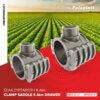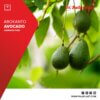Olive Trees Planting and Irrigating.
- The European olive (Olea europaea) is the most commonly cultivated species of olive tree in the world, belonging to the family Oleacea, genus Olea. The genus Olea includes many species and varieties such as the wild olive (Olea sylvestris), the “sweet” olive (Olea nigra dulcis), the blue olive (Olea nubrotunda) for the production of edible olives etc.
- The olive tree was known since ancient times, and according to Greek mythology it is a holy tree under the protection of the goddess Athena. According to the myth, in the contest between the gods for the protector of city of Athens, which was held on the sacred rock of the Acropolis, Athena emerged victorious, giving the Athenians the world’s first olive tree, which grew where her spear struck. From that moment on, the olive trees around Athens were declared sacred and the punishment for any sabotage was ostracism or death.
- Following this, it seems that the first people to cultivate the olive tree were the Greeks and then its cultivation spread to the European Mediterranean area. Today, according to FAOSTAT data for the year 2021, total world production has reached 20 million tons, with Spain in first place (39.41% of world production), followed by Italy (16.04%), Greece (10.08%), Turkey (8.82%), Morocco (7.14%), etc.
OLIVE TREE IRRIGATION
When can an olive plantation be established?
The establishment of an olive plantation with olive seedlings can be carried out between November and April for areas not affected by frosts or after April and until the end of spring for areas with late frosts. In any case, it is advisable to avoid planting in the hot summer months.
How important is irrigation for olive trees?
Olive trees belong to the species with a very good defense mechanism against drought and can therefore be cultivated even in very dry conditions, unlike the majority of fruit trees that cannot be cultivated in such conditions. However, this defense mechanism against drought acts to the disadvantage of the growth and yield of olive trees. Therefore, by improving soil moisture conditions, the productivity of the trees is also significantly improved. Olive trees have the ability to make use of any amount of soil water it is offered. However, when soil moisture becomes excessive (in relation to their needs) olive trees suffer greater stress than others.
Under what circumstances is irrigation recommended for olive trees?
Olive tree irrigation is beneficial and would be helpful in areas where rainfall is insufficient, when it is concentrated in the winter months, leaving trees without water during the critical periods of spring and summer, and in areas with sand or gravel soils and limited water absorption capacity. It is also particularly recommended for edible varieties of olive trees and for intensive crops with very dense planting of trees. Finally, it is worth noting that proper irrigation enhances the effect of pruning and fertilization on an olive plantation.
Which are the recommended irrigation methods for olive trees?
Having in mind the efficiency of the irrigation system and water saving, the most suitable irrigation system for olive cultivation is drip irrigation and more specifically the use of Pressure Compensating Driplines “Paladrip-FC” or the use of system with micro-sprinklers, due to their targeted application to each tree and lower water losses from evaporation.
How important is the use of filters in our irrigation system?
The use of proper irrigation water filtration methods is essential to ensure the appropriate and uninterrupted operation of our irrigation system.
Palaplast has a wide range of products that can be used to install a reliable and efficient drip irrigation or micro-sprinkler irrigation system for olive tree plantations:
- Irrigation pipes AGROPAL HDPE 80 και LDPE
- Pressure Compensating Driplines, Driplines (Paladrip – Palaplast, Paladrip-XL – Palaplast, Paladrip-Slim – Palaplast)
- Dripline fittings
- Microsprinklers and fittings (Pal Rotating Super Sprayer, Pal Rotating Special Sprayer, Dual adjuster, Spike)
- Clamp saddles
- Filters



